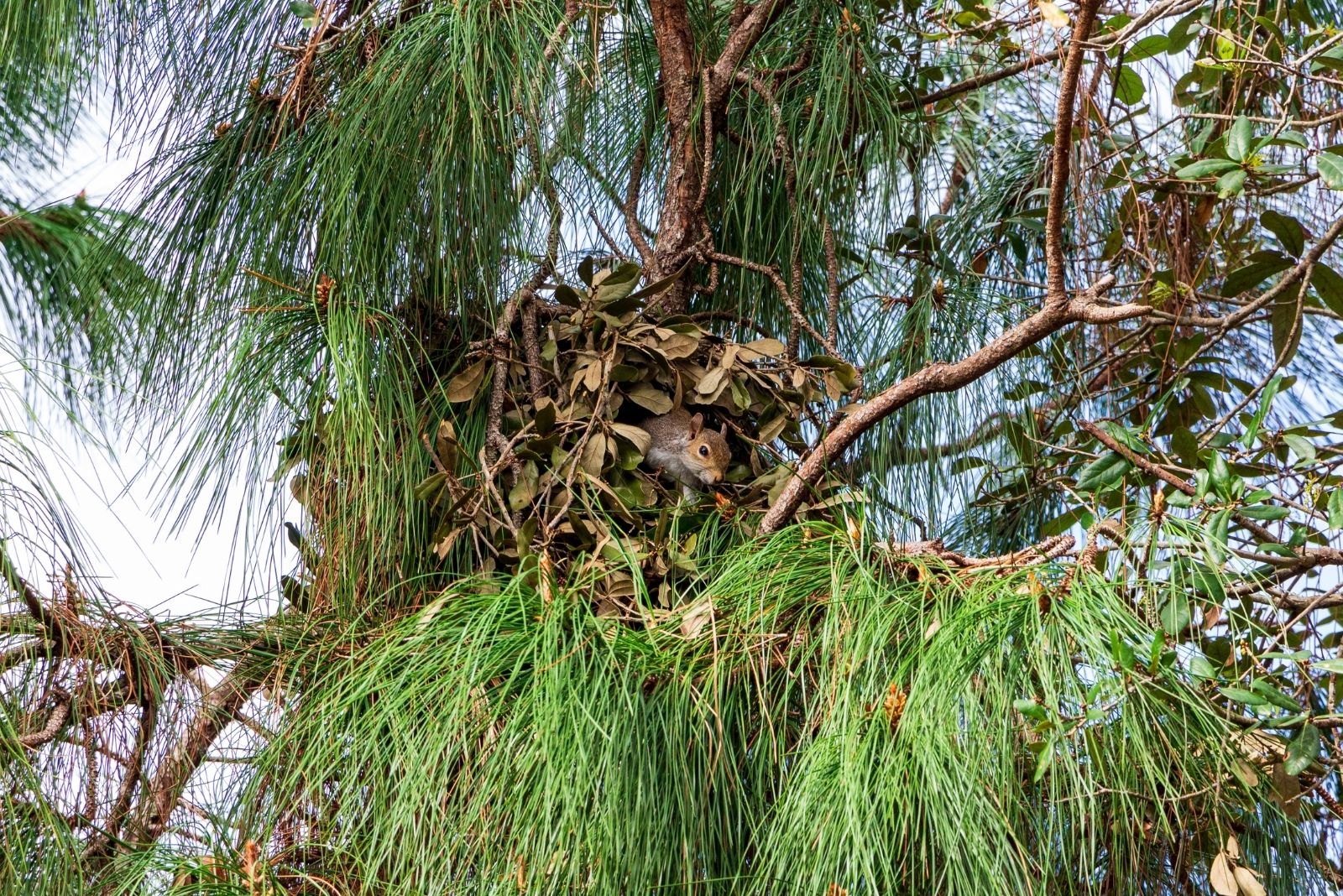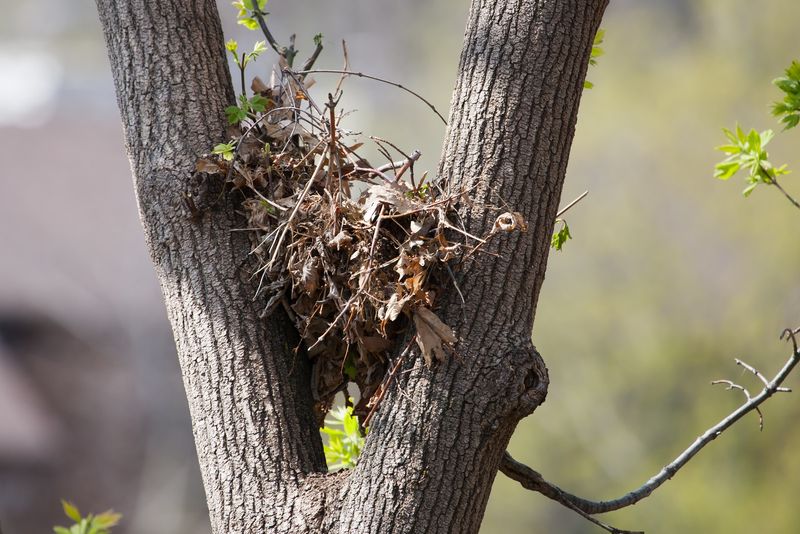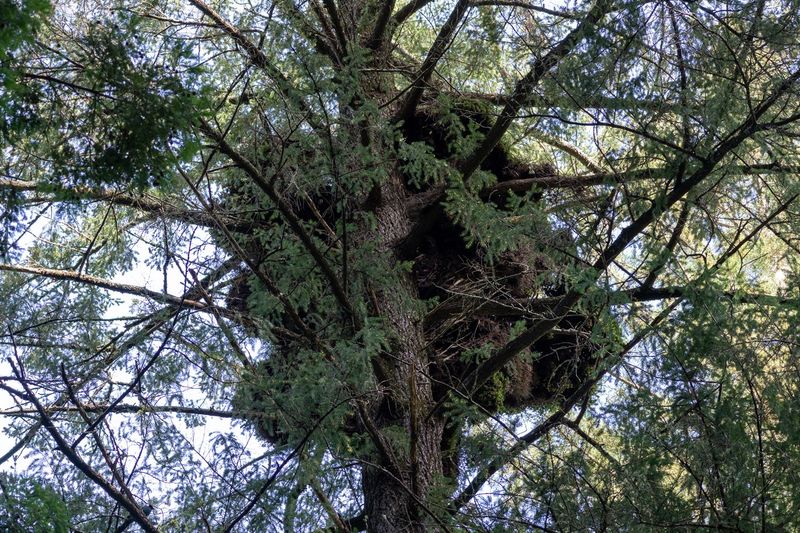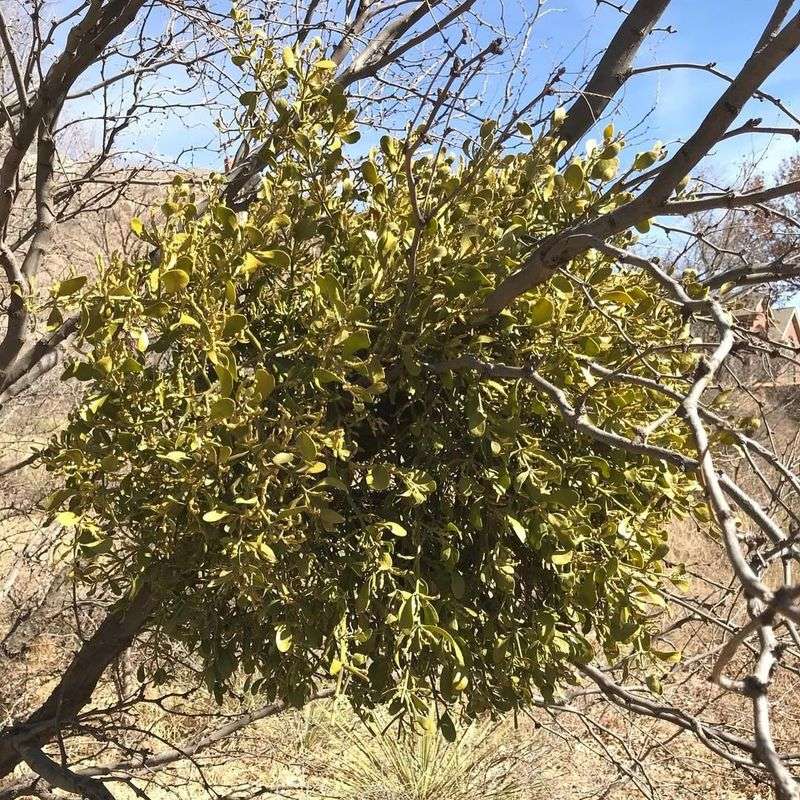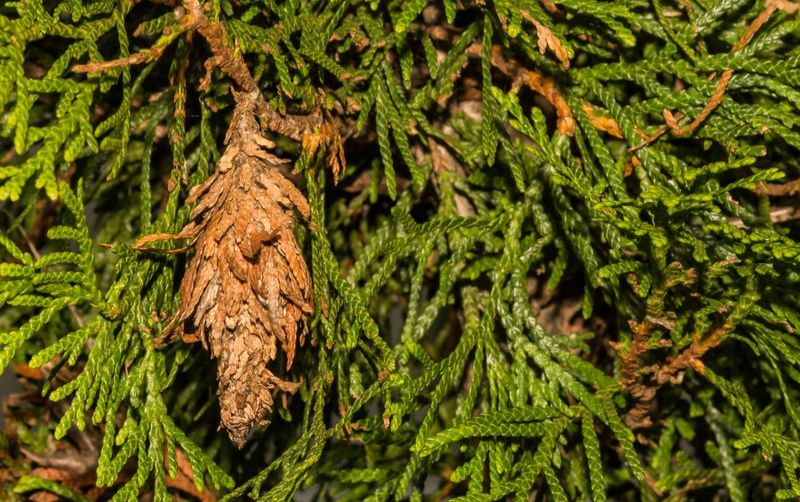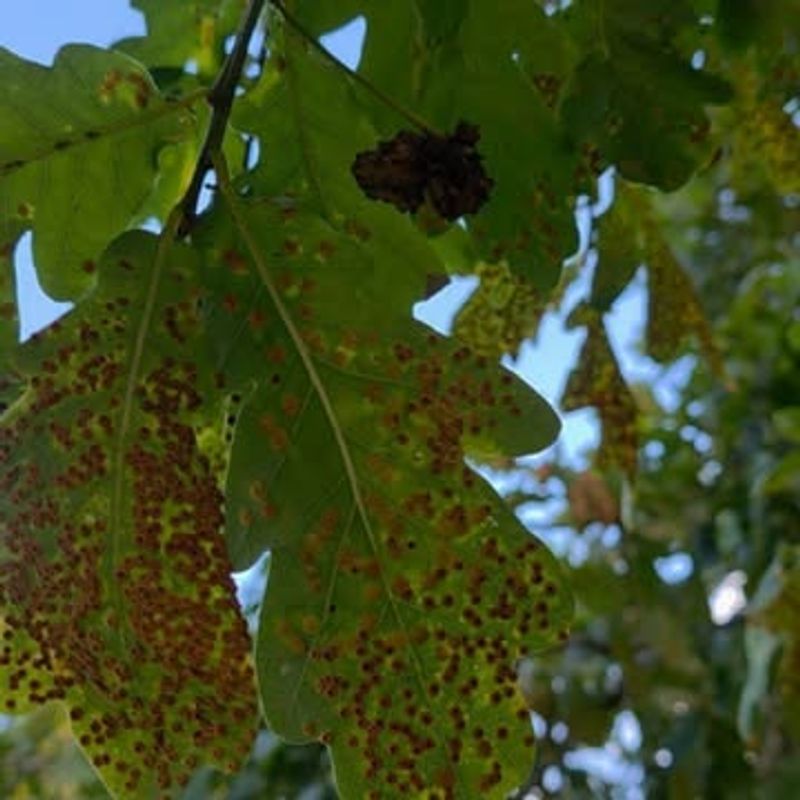Ever spotted a big, tangled ball of leaves high up in a Kansas tree and wondered what it could be? Many people mistake these leafy clusters for abandoned bird nests, but they’re usually something entirely different.
Understanding what these mysterious bundles actually are can help you identify tree health issues, spot wildlife activity, and appreciate the surprising ways nature works right in your own backyard.
1. Squirrel Dreys Built For Winter Survival
Squirrels construct elaborate homes called dreys using leaves, twigs, and bark, which look remarkably like messy leaf piles wedged in tree branches. These skilled architects weave materials tightly together, creating waterproof shelters that keep them warm during harsh Kansas winters.
Unlike flimsy bird nests, dreys are typically football-sized and positioned close to the trunk for stability. You’ll often see multiple dreys in one area since squirrels build several backup homes throughout their territory, rotating between them depending on weather and food availability nearby.
2. Witch’s Broom Disease Causing Abnormal Growth
When you notice a dense, tangled mass of branches and leaves sprouting from one spot, you’re probably looking at witch’s broom disease. This peculiar condition results from fungal infections, mites, or viruses that disrupt normal growth hormones in trees.
The affected area produces excessive shoots that grow in all directions, creating that characteristic rounded clump. Many Kansas trees, especially hackberries and honeylocusts, are susceptible to this condition. While it looks alarming, witch’s broom rarely kills mature trees, though it does weaken branches over time.
3. Mistletoe Clumps Stealing Nutrients
That evergreen ball staying bright when surrounding leaves fall might be mistletoe, a parasitic plant that attaches to tree branches. This plant sends root-like structures into the host tree, siphoning water and nutrients for its own survival.
Mistletoe thrives throughout Kansas, particularly on cottonwoods, elms, and hackberries. The clumps grow slowly but can eventually weaken branches or even entire trees if left unchecked. Interestingly, birds spread mistletoe by eating its berries and depositing seeds on branches, continuing the cycle across your neighborhood.
4. Bagworm Infestations Wrapped In Silk
Bagworms create protective cases from silk and bits of the host plant, which dangle from branches like small pinecones or leaf bundles. When hundreds cluster together, they form what appears to be a leafy mass that can defoliate entire sections of Kansas evergreens and deciduous trees.
These destructive pests particularly love junipers, arborvitae, and spruces common in Kansas landscapes. The bags contain caterpillars that emerge to feed, causing significant damage. Removing bags by hand during winter prevents spring hatching and protects your trees from serious harm.
5. Leaf Galls Formed By Tiny Insects
Certain wasps, mites, and aphids inject chemicals into leaves that trigger abnormal tissue growth, creating structures called galls. These growths provide shelter and food for developing insect larvae inside. Oak trees across Kansas commonly develop clustered galls that resemble bunched-up leaves or small fruits.
While they look concerning, most galls cause minimal harm to healthy trees. The various shapes—round balls, spiky clusters, or fuzzy masses—depend on which insect species created them. Monitoring gall populations helps you understand the ecosystem balance in your Kansas yard without requiring treatment.
6. Abandoned Wasp Nests Covered In Leaves
Paper wasps and hornets build papery nests that, once abandoned in fall, collect leaves and debris blown by Kansas winds. These structures become camouflaged bundles that blend perfectly with surrounding foliage, making them hard to distinguish from other leaf clusters.
Most wasp colonies die off after the first frost, leaving behind empty nests that pose no threat. The remaining structure gradually deteriorates throughout winter. If you’re curious, wait until late winter to inspect closely, ensuring no activity remains before investigating what’s actually inside that mysterious clump.
7. Clumped Leaves Caught On Broken Branches
Sometimes the simplest explanation is correct—wind blows loose leaves into broken branch stubs or crotches where they lodge and accumulate. Strong Kansas storms frequently snap smaller branches, creating perfect traps for airborne debris. These accidental collections grow larger as more material piles on throughout fall and winter.
They’re completely harmless and will eventually decompose or blow away during the next big windstorm. Unlike living structures, these clumps lack the organized construction of animal nests or the green growth of parasitic plants, making them easy to identify once you look closely.

